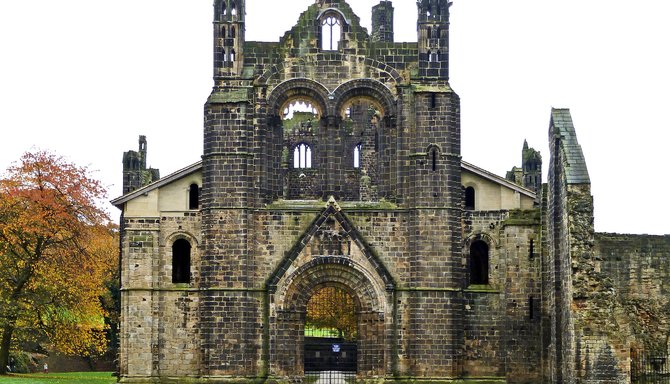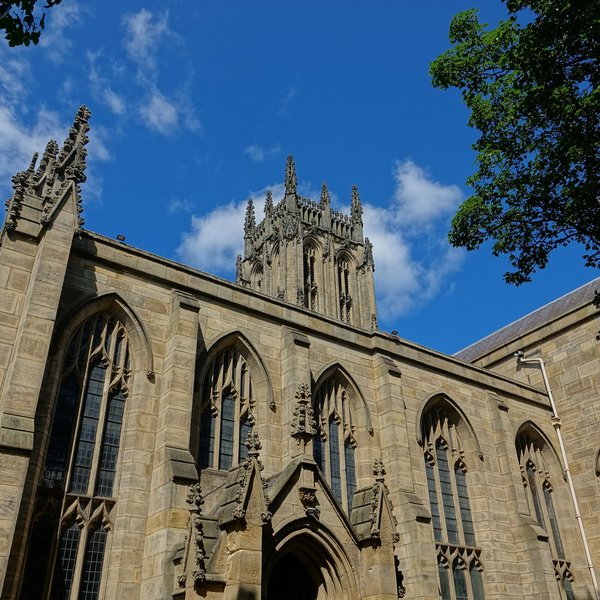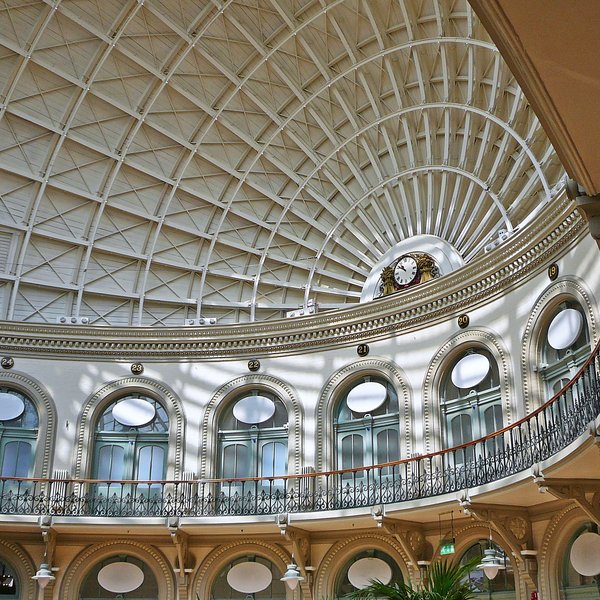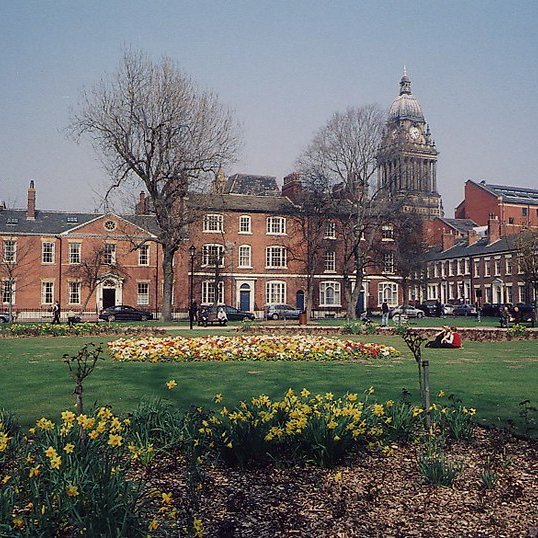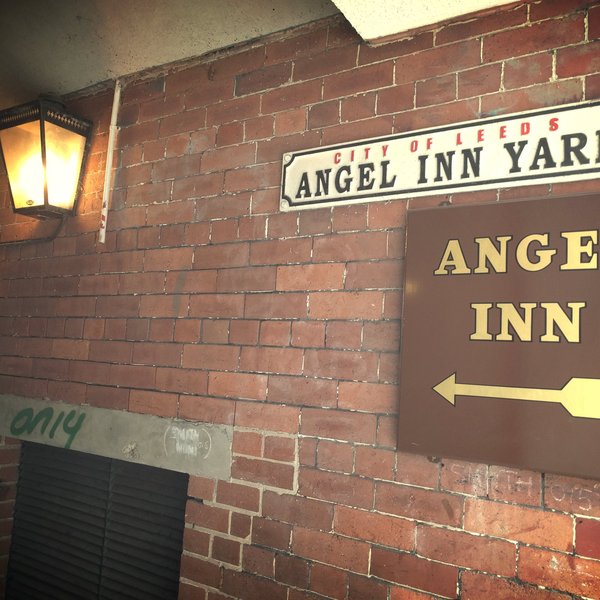
Exploring Kirkstall Abbey in Leeds
Founded around 1152, Kirkstall Abbey, on the north bank of the River Aire just over 3 miles from Leeds city centre, is one of the best preserved Cistercian monasteries in the country. The Abbey flourished until its dissolution during Henry VIII's reign as part of the Dissolution of the Monasteries. Acquired by the Leeds Corporation in the late 19th century, the Abbey's beautiful ruins were opened to the public with the gatehouse becoming a visitor centre under the umbrella of Leeds Museums & Galleries. Today, designated as a Grade I listed building and a scheduled ancient monument, Kirkstall Abbey continues to attract visitors from around the world.

Designing the Kirkstall Abbey
Kirkstall Abbey is a prime example of English Cistercian architecture, following a familiar plan shared with other Cistercian houses like Fountains, Rievaulx, Tintern, and Netley. The church structure features a short chancel, three eastward chapels, and solid walls.
Although characterised by simplicity – unornamented windows and no triforium in the nave – the building exhibits early Gothic features such as pointed vaulting arches and round-headed windows and doorways.
Fish-ponds lay between the monastery and the river to the south, with the Abbey mill located about 80 yards northwest. The millpool and mill stream are still discernible in the surrounding area.

The History of Kirkstall Abbey
Establishment and Early History
Kirkstall Abbey, founded in 1152 by Abbot Alexander with support from Henry De Lacy, was largely completed between 1152 and 1182 under Abbot Alexander's supervision. At first the structure was earmarked as an Abbey dedicated to the Virgin Mary. This was a promise made by De Lacy if he recovered from a severe illness. When he did recover, he provided land at Barnoldswick but the monks shortly relocated to the current site in Kirkstall, due to inhospitable conditions.
Following a Cistercian architectural plan, led by Abbot Alexander and twelve monks from Fountains Abbey, Kirkstall Abbey features a plain church, short chancel, and transepts with eastward chapels, reflecting the austere aesthetic principles of the Cistercian order.

Dissolution and Change of Ownership
For nearly four centuries, Kirkstall Abbey was home to Cistercian monks, who filled the Abbey’s lands with sheep and made money from the wool trade. Until 1539, when the Abbey succumbed to Henry VIII's dissolution of the monasteries. From here the Abbey’s ownership changed hands several times, each time the Abbey endured neglect and further deterioration.
Thomas Cranmer became the new owner in 1542, but the crown reclaimed the Abbey upon Cranmer's execution in 1556. Sir Robert Savile acquired the estate in 1584, initiating a period of nearly a century of Savile family ownership. The Brudenell family, Earls of Cardigan, took possession in 1671, during which much of its stone was repurposed for other local constructions.

A Turning Point for Kirkstall Abbey
During the 18th century, Kirkstall Abbey's ruins captured the imagination of Romantic artists such as J. M. W. Turner, John Sell Cotman, and novelist William Wells Brown in 1851, who described its 'pensive beauty'. In 1889, Colonel John North purchased the abbey, later gifting it to Leeds City Council. This led to a significant restoration project undertaken by the council, and the Abbey's reopening to the public in 1895.

Abbey House Museum
Adjacent to the main road lies the Grade II listed former abbey gatehouse, which recently underwent a £5.5 million renovation program. It is now home to the Abbey House Museum, equipped with interactive exhibits that look at the daily lives of the 12th century Cistercian monks.

Kirkstall Abbey Grounds
The Abbey’s grounds, spanning 7 acres, have been transformed into a public park, which hosts several events throughout the year including the Leeds Shakespeare Festival, the Kirkstall Festival, and the Kirkstall Fantasia open-air concerts. Due to its picturesque quality, the Abbey has been used as a filming location, for the live BBC Three event "Frankenstein's Wedding... Live in Leeds" in 2011, for the BBC Television series "Gunpowder" (2017), as well as serving as the backdrop for concerts by artists like the Kaiser Chiefs in 2011.

Visiting Kirkstall Abbey
A visit to Kirkstall Abbey promises more than an examination of ancient ruins and the daily lives of humble monks. There are actually a lot of activities on offer for visitors of all interests. Runners and dog-walkers use the tarmac paths that wind through the grounds, or there are more serious exercise groups like Kirkstall Bootcamp or the Ladies Running Group that visitors can join as well.
Anglers can cast their lines in the River Aire, and families can stop for a picnic while they watch to see if anyone reels in a fish. There are also outdoor cinema nights, craft markets and workshops, and live concerts. Nearby, the West Leeds Activity Centre has a variety of outdoor pursuits, Timberjacks Leeds hosts axe throwing, and the three-storey Arcade Club Leeds is great for kids.

Explore Leeds with CityDays
The best way to discover more hidden gems around Leeds is to take your time and, ideally, have a pre-planned route that takes you past all the noteworthy nooks and hidden gems.
We can help you there!
Our brand-new routes, Medieval Origins and Wagonways, Rivers and Rails combine the fun of an outdoor treasure hunt with the historic facts and whimsical trivia of a walking tour.
Answer riddles, solve puzzles and learn more about Leeds' history in a new and interactive way!
Take the stress out of planning your visit to Leeds and book your adventure today!
Not visiting Leeds this time? Don’t worry, you’ll find us all over the world.
